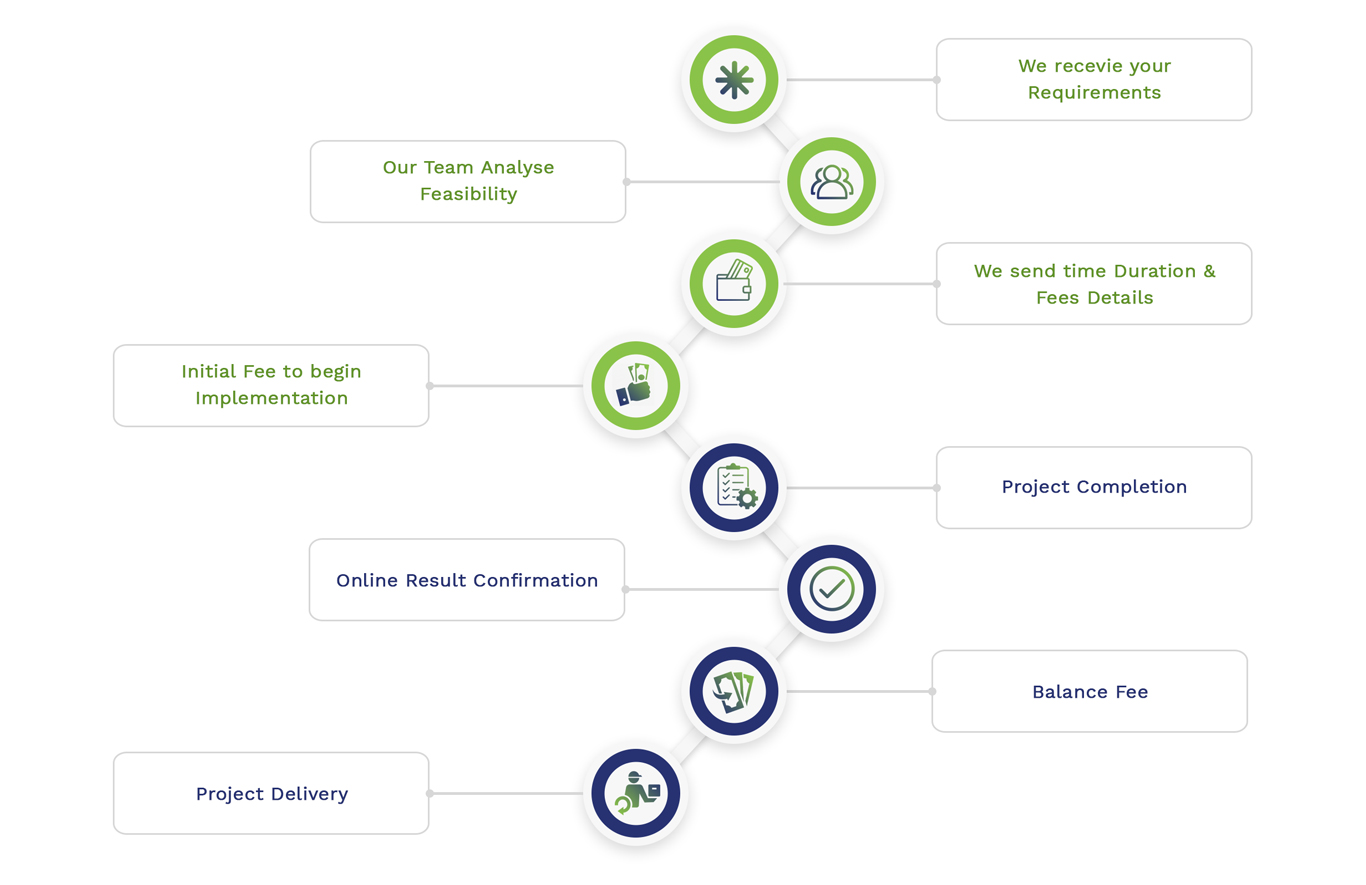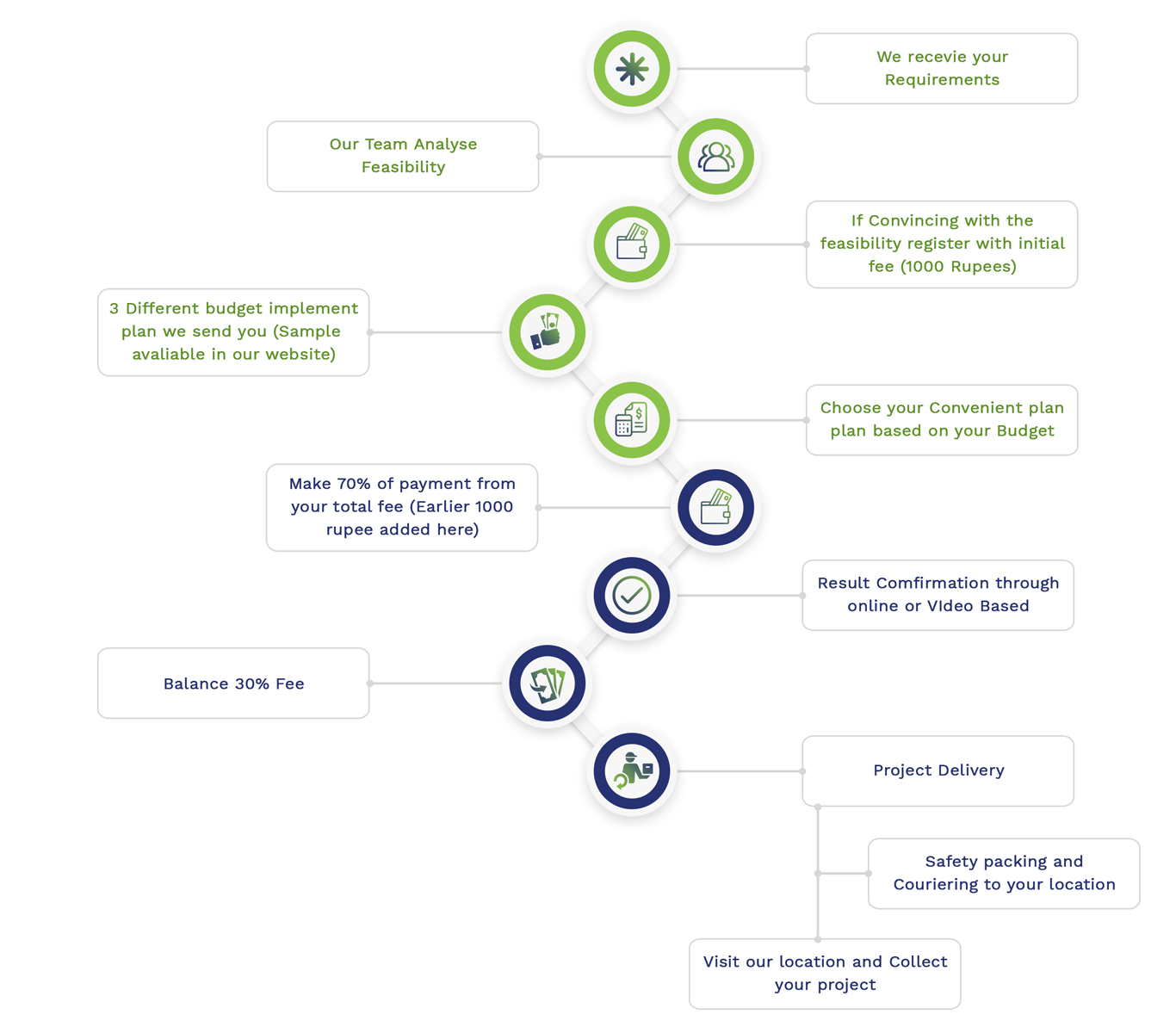Mobile Communication Thesis topics that are emerging in the current years are discussed below. Contact us for best article writing and programming assistance. We offer few Mobile Communication topics that are formulated to offer extensive perceptions based on algorithm creation, improvement, and use in mobile communication models:
- Algorithm for Dynamic Spectrum Allocation in 5G Networks
- Thesis Outline: As a means to enhance the utilization of accessible spectrum in 5G networks, we plan to investigate methods for dynamic spectrum allocation.
- Algorithm Explanations:
- Algorithm Kind: Heuristic-based or Machine Learning-based.
- Purpose: On the basis of actual time network requirements and intervention situations, this method allots spectrum resources in a dynamic manner.
- Procedures:
- Spectrum Sensing: To forecast spectrum habitation, our team employs a machine learning framework.
- Resource Allocation: As a means to allot sources in an effective manner, it is approachable to implement a heuristic method such as Genetic Algorithm (GA).
- Interference Management: Specifically, for interference identification and reduction, we aim to apply suitable techniques.
- Result: This research offers decreased intervention and enhanced spectrum consumption.
- Energy-Efficient Routing Algorithms for Mobile Ad-Hoc Networks (MANETs)
- Thesis Outline: In order to improve energy effectiveness in MANETs, our team focuses on constructing and examining routing methods.
- Algorithm Explanations:
- Algorithm Kind: Energy-Aware Routing Algorithm.
- Purpose: In addition to sustaining network effectiveness, reduce energy utilization by enhancing routing paths.
- Procedures:
- Path Selection: Typically, Dijkstra’s method has to be utilized which is altered to encompass energy parameters.
- Energy Calculation: For every potential route, it is significant to compute the energy expense.
- Route Optimization: As a means to choose the efficient path, our team applies an energy-aware AODV (Ad-hoc On-demand Distance Vector) protocol.
- Result: Generally, stabilized energy utilization among nodes and prolonged network lifespan are provided in this study.
- Machine Learning Algorithms for Mobile Network Traffic Prediction
- Thesis Outline: In mobile communication models, forecast network traffic by exploring methods of machine learning.
- Algorithm Explanations:
- Algorithm Kind: Time-Series Prediction Algorithm.
- Purpose: To enhance resource allocation, it forecasts upcoming network traffic.
- Procedures:
- Data Collection: From mobile networks, we aim to collect historical traffic data.
- Feature Extraction: Significant characteristics like user mobility, time of day, and application usage has to be obtained.
- Model Training: For traffic prediction, it is appreciable to employ systems such as ARIMA or Long Short-Term Memory (LSTM).
- Performance Evaluation: Our team focuses on assessing the prediction precision and adapting the model metrics in an efficient manner.
- Result: This research provides decreased congestion and enhanced network resource management.
- Algorithms for Secure Data Transmission in Mobile IoT Networks
- Thesis Outline: In IoT networks linked among mobile models, we aim to model methods to assure safer data transmission.
- Algorithm Explanations:
- Algorithm Kind: Lightweight Cryptographic Algorithm.
- Purpose: In order to secure in opposition to interfering and eavesdropping, this technique encrypts data.
- Procedures:
- Key Generation: On the basis of the key generation plan, we focus on applying an Elliptic Curve Cryptography (ECC).
- Data Encryption: Mainly, for data encryption, it is beneficial to utilize a lightweight encryption method such as AES.
- Data Transmission: Encryption should be combined along with a safe communication protocol such as DTLS (Datagram Transport Layer Security).
- Decryption: Through the utilization of similar cryptographic keys, our team implements the decryption procedure at the receiver end.
- Result: In mobile IoT networks, it offers improved protection and data morality.
- Adaptive Modulation and Coding Algorithms for Mobile Communication
- Thesis Outline: On the basis of channel situations, intend on improving data levels by constructing effective methods for adaptive modulation and coding.
- Algorithm Explanations:
- Algorithm Kind: Adaptive Algorithm.
- Purpose: As a means to enhance throughput, this algorithm adapts modulation and coding plans in a dynamic manner.
- Procedures:
- Channel Estimation: To evaluate the recent channel situation, our team intends to utilize methods such as Least Squares.
- Modulation Selection: A lookup table or machine learning system should be applied to choose the efficient modulation plan such as PSK, QAM.
- Coding Adjustment: On the basis of assessed Signal-to-Noise Ratio (SNR), we implement adaptive coding approaches such as Turbo Codes.
- Feedback Loop: In order to upgrade the transmitter regarding the best scenarios, it is approachable to combine the feedback technology.
- Result: In differing channel situations, it provides improved data levels and credibility.
- Algorithms for Handover Management in 5G Networks
- Thesis Outline: To assure consistent connectivity in 5G networks, we aim to explore and create methods for effective handover management.
- Algorithm Explanations:
- Algorithm Kind: Handover Decision Algorithm.
- Purpose: The best time and target cell for handover should be identified.
- Procedures:
- Signal Strength Monitoring: From surrounding cells, our team plans to track the signal robustness in a continuous manner.
- Decision Making: On the basis of metrics such as load, signal strength, and velocity, make handover choices through the utilization of methods such as Neural Networks or Fuzzy Logic.
- Execution: To reduce disruption, we deploy a consistent handover protocol.
- Result: This study offers decreased call drops and enhanced user expertise at the time of mobility.
- Protocol and Algorithm Design for Cognitive Radio Networks
- Thesis Outline: For cognitive radio networks, our team formulates suitable methods to prevent intervention and increase spectrum utilization.
- Algorithm Explanations:
- Algorithm Kind: Spectrum Sensing and Allocation Algorithm.
- Purpose: This algorithm is capable of identifying unutilized spectrum and allot it to users in a dynamic manner.
- Procedures:
- Spectrum Sensing: In order to detect accessible spectrum, we employ methods such as Energy Detection and Cyclostationary Feature Detection.
- Allocation Strategy: It is appreciable to apply techniques such as Game Theory to dynamically allot spectrum sources.
- Interference Avoidance: For spectrum sharing, our team focuses on constructing methods that contain the capability to prevent intervention with initial users.
- Result: Interventions are decreased and there is an effective spectrum usage in this research.
- Algorithms for QoS in Mobile Multimedia Applications
- Thesis Outline: As a means to assure Quality of Service (QoS) for multimedia applications across mobile networks, we intend to create suitable methods.
- Algorithm Explanations:
- Algorithm Kind: QoS Management Algorithm.
- Purpose: To align with QoS necessities, this method handles delay, packet loss, and bandwidth.
- Procedures:
- Resource Allocation: On the basis of QoS necessities, allot sources by employing techniques such as Weighted Fair Queuing (WFQ).
- Traffic Shaping: To regulate data flow, it is significant to apply approaches of traffic shaping.
- Performance Monitoring: For actual time tracking of QoS parameters and dynamic modification, our team constructs appropriate methods.
- Result: In multimedia applications, it offers enhanced user expertise.
- Development of Algorithms for Delay-Tolerant Mobile Networks
- Thesis Outline: To handle data transmission in delay-tolerant mobile networks, it is approachable to explore techniques.
- Algorithm Explanations:
- Algorithm Kind: Routing and Forwarding Algorithm.
- Purpose: In spite of irregular connectivity, this technique assures consistent data supply.
- Procedures:
- Node Discovery: For node discovery in limited networks, we aim to utilize approaches such as Epidemic Routing.
- Data Forwarding: In order to handle data transmission, it is crucial to apply store-and-forward approaches.
- Buffer Management: At the time of connectivity gaps, we manage data by constructing methods for effective buffer management.
- Result: Typically, in complicating network situations, this study provides consistent data supply.
- Algorithms for Enhancing Security in Mobile Payment Systems
- Thesis Outline: It is appreciable to model and assess techniques to enhance the protection of mobile payment frameworks.
- Algorithm Explanations:
- Algorithm Kind: Authentication and Encryption Algorithm.
- Purpose: This method is capable of protecting transactions and securing user data.
- Procedures:
- User Authentication: By integrating biometrics, passwords, and device-related aspects, our team employs multi-factor authentication methods.
- Data Encryption: Generally, end-to-end encryption techniques such as AES and RSA should be applied.
- Fraud Detection: For actual time fraud identification, we focus on creating methods of machine learning.
- Result: In mobile payment models, it provides improved reliability and protection.
How to simulate mobile communication projects?
The process of simulating projects is determined as complicated as well as intriguing. We suggest an extensive instruction based on how to carry out simulations by employing ns-3 for mobile communication projects in an effective manner:
Step 1: Install ns-3
- Download ns-3:
- It is approachable to download the modern version by directing to the ns-3 website.
- Install Dependencies:
- Numerous kinds like C++, Python, and different libraries are needed by ns-3. By employing our package manager, we focus on installing these in an effective manner.
sudo apt-get update
sudo apt-get install g++ python3 python3-dev mercurial git
sudo apt-get install qt5-qmake qt5-default
sudo apt-get install libgtk2.0-0 libgtk2.0-dev
sudo apt-get install cmake libc6-dev libc6-dev-i386 libclang-dev
sudo apt-get install llvm-dev automake autoconf
Install ns-3:
- It is significant to obtain the downloaded ns-3 package and compile the source code in an efficient way.
tar xjf ns-allinone-3.x.tar.bz2
cd ns-allinone-3.x/ns-3.x
./waf configure
./waf build
Step 2: Configure a Mobile Communication Scenario
- Develop a New Simulation Script:
- In Python or C++, it is advisable to write the simulation script. Focus on initiating by developing a novel file, for instance., mobile_simulation.cc.
- Encompass Necessary ns-3 Modules:
- For mobile network simulation, we aim to encompass the necessary modules.
#include “ns3/core-module.h”
#include “ns3/network-module.h”
#include “ns3/mobility-module.h”
#include “ns3/wifi-module.h”
#include “ns3/lte-module.h”
#include “ns3/internet-module.h”
Define Network Nodes:
- Nodes have to be constructed in such a way that depicts mobile devices and base stations.
ns3::NodeContainer ueNodes;
ueNodes.Create(2); // Create two user equipment (UE) nodes
ns3::NodeContainer enbNodes;
enbNodes.Create(1); // Create one eNodeB (base station)
Set up Mobility Models:
- For nodes to simulate behaviour, our team focuses on configuring mobility systems.
ns3::MobilityHelper mobility;
mobility.SetMobilityModel(“ns3::ConstantPositionMobilityModel”);
mobility.Install(enbNodes);
mobility.SetMobilityModel(“ns3::RandomWalk2dMobilityModel”,
“Bounds”, ns3::RectangleValue(ns3::Rectangle(-50, 50, -50, 50)));
mobility.Install(ueNodes);
Install Network Protocols:
- On the nodes, it is crucial to install the essential network stack.
ns3::InternetStackHelper internet;
internet.Install(ueNodes);
internet.Install(enbNodes);
Set Up LTE Configuration:
- Encompassing UE and eNodeB, it is appreciable to set up the LTE network.
ns3::LteHelper lteHelper = ns3::CreateObject<ns3::LteHelper>();
ns3::NetDeviceContainer enbDevs = lteHelper->InstallEnbDevice(enbNodes);
ns3::NetDeviceContainer ueDevs = lteHelper->InstallUeDevice(ueNodes);
lteHelper->Attach(ueDevs, enbDevs.Get(0));
Assign IP Addresses:
- For the nodes, our team intends to set up IP addresses.
ns3::Ipv4AddressHelper ipv4;
ipv4.SetBase(“10.1.1.0”, “255.255.255.0”);
ns3::Ipv4InterfaceContainer ueIpIface = ipv4.Assign(ueDevs);
Configure Application Traffic:
- Generally, application traffic like TCP or UDP has to be included.
uint16_t dlPort = 1234;
ns3::UdpServerHelper dlPacketSinkHelper(dlPort);
ns3::ApplicationContainer dlServerApps = dlPacketSinkHelper.Install(ueNodes.Get(0));
dlServerApps.Start(ns3::Seconds(1.0));
dlServerApps.Stop(ns3::Seconds(10.0));
ns3::UdpClientHelper dlClient(ueIpIface.GetAddress(0), dlPort);
dlClient.SetAttribute(“MaxPackets”, ns3::UintegerValue(1000));
dlClient.SetAttribute(“Interval”, ns3::TimeValue(ns3::MilliSeconds(10)));
dlClient.SetAttribute(“PacketSize”, ns3::UintegerValue(1024));
ns3::ApplicationContainer dlClientApps = dlClient.Install(enbNodes.Get(0));
dlClientApps.Start(ns3::Seconds(2.0));
dlClientApps.Stop(ns3::Seconds(10.0));
Step 3: Run the Simulation
- Run the Simulation Script:
- It is appreciable to compile and execute the script in an effective way.
./waf –run mobile_simulation
- Monitor Simulation Output:
- As a means to track the simulation, ns-3 offers extensive records and output files.
Step 4: Analyze Outcomes
- Collect Data:
- From the records or trace files, we plan to collect simulation data.
lteHelper->EnableTraces();
- Visualize Data:
- We examine and visualize the outcomes, our team employs ns-3 visualization tools or external tools such as Python or GNUPlot.
- Interpret Results:
- Through investigating parameters like latency, handover success levels, throughput, and packet loss, it is approachable that we evaluate the effectiveness of our simulated mobile communication network.
Instance: Basic LTE Simulation Script
The following is a basic instance of a simple LTE simulation script in ns-3:
#include “ns3/core-module.h”
#include “ns3/network-module.h”
#include “ns3/mobility-module.h”
#include “ns3/lte-module.h”
#include “ns3/internet-module.h”
using namespace ns3;
int main(int argc, char *argv[]) {
// Create nodes
NodeContainer ueNodes;
ueNodes.Create(1); // Create one user equipment node
NodeContainer enbNodes;
enbNodes.Create(1); // Create one eNodeB node
// Set up mobility
MobilityHelper mobility;
mobility.SetMobilityModel(“ns3::ConstantPositionMobilityModel”);
mobility.Install(enbNodes);
mobility.SetMobilityModel(“ns3::RandomWalk2dMobilityModel”,
“Bounds”, RectangleValue(Rectangle(-50, 50, -50, 50)));
mobility.Install(ueNodes);
// Install LTE
Ptr<LteHelper> lteHelper = CreateObject<LteHelper>();
NetDeviceContainer enbDevs = lteHelper->InstallEnbDevice(enbNodes);
NetDeviceContainer ueDevs = lteHelper->InstallUeDevice(ueNodes);
// Attach UE to eNodeB
lteHelper->Attach(ueDevs, enbDevs.Get(0));
// Set up the internet stack and assign IP addresses
InternetStackHelper internet;
internet.Install(ueNodes);
Ipv4AddressHelper ipv4;
ipv4.SetBase(“10.1.1.0”, “255.255.255.0”);
Ipv4InterfaceContainer ueIpIface = ipv4.Assign(ueDevs);
// Add application
uint16_t dlPort = 1234;
UdpServerHelper dlPacketSinkHelper(dlPort);
ApplicationContainer dlServerApps = dlPacketSinkHelper.Install(ueNodes.Get(0));
dlServerApps.Start(Seconds(1.0));
dlServerApps.Stop(Seconds(10.0));
UdpClientHelper dlClient(ueIpIface.GetAddress(0), dlPort);
dlClient.SetAttribute(“MaxPackets”, UintegerValue(1000));
dlClient.SetAttribute(“Interval”, TimeValue(MilliSeconds(10)));
dlClient.SetAttribute(“PacketSize”, UintegerValue(1024));
ApplicationContainer dlClientApps = dlClient.Install(enbNodes.Get(0));
dlClientApps.Start(Seconds(2.0));
dlClientApps.Stop(Seconds(10.0));
// Run the simulation
Simulator::Stop(Seconds(11.0));
Simulator::Run();
Simulator::Destroy();
return 0;
}
Together with thesis outline, algorithm explanations, and results, we suggested a few efficient topics, and also provided thorough directions that assist you to perform simulations by utilizing ns-3 for mobile communication projects in an efficient way.
Mobile Communication Thesis Topics & Ideas
Mobile Communication Thesis Topics & Ideas are shared where we carry on in-depth research and help scholars. Rather than presenting a list of topics, offer scholars guidance in identifying relevant research questions within the vast realm of mobile communication. Depending on your chosen area, we provide examples of methodologies, frameworks read the ideas and contact us for more help.
- Analysis of tourist behaviour based on the tracking data collected using a mobile communication instrument
- HTS dual-band bandpass filters using stub-loaded hair-pin resonators for mobile communication systems
- Regaining drifting mobile communication customers: Predicting the odds of success of winback efforts with competing risks regression
- Simulated mobile communication frequencies (3.5 GHz) emitted by a signal generator affects the sleep of Drosophila melanogaster
- Planning the development strategy for the mobile communication package based on consumers’ choice preferences
- Fuzzy GMDH-type neural network model and its application to forecasting of mobile communication
- Spam filtering framework for multimodal mobile communication based on dendritic cell algorithm
- Physicians appeals on the dangers of mobile communication – what is the evidence? Assessment of public health data
- Optimized broadband and dual-band printed slot antennas for future millimeter wave mobile communication
- A System Dynamics Approach to Modelling a Nationwide Mobile Communication Market
- Counting handovers in a cellular mobile communication network: equilibrium renewal process approach
- Expression of the immediate early gene, c-fos, in mouse brain after acute global system for mobile communication microwave exposure
- Optimal switch location in mobile communication networks using hybrid genetic algorithms
- A system dynamics approach to demand and allocation of wireless spectrum for mobile communication
- Reliability and degradation mechanism of AlGaN/GaN HEMTs for next generation mobile communication systems
- Component-based development of DSP software for mobile communication terminals
- Information spreading on mobile communication networks: A new model that incorporates human behaviors
- Tracking survey for individual travel behaviour using mobile communication instruments
- An AAA scheme using ID-based ticket with anonymity in future mobile communication
- Technology substitution and innovation adoption: The cases of imaging and mobile communication markets
Subscribe Our Youtube Channel
You can Watch all Subjects Matlab & Simulink latest Innovative Project Results
Our services
We want to support Uncompromise Matlab service for all your Requirements Our Reseachers and Technical team keep update the technology for all subjects ,We assure We Meet out Your Needs.
Our Services
- Matlab Research Paper Help
- Matlab assignment help
- Matlab Project Help
- Matlab Homework Help
- Simulink assignment help
- Simulink Project Help
- Simulink Homework Help
- Matlab Research Paper Help
- NS3 Research Paper Help
- Omnet++ Research Paper Help
Our Benefits
- Customised Matlab Assignments
- Global Assignment Knowledge
- Best Assignment Writers
- Certified Matlab Trainers
- Experienced Matlab Developers
- Over 400k+ Satisfied Students
- Ontime support
- Best Price Guarantee
- Plagiarism Free Work
- Correct Citations
Expert Matlab services just 1-click

Delivery Materials
Unlimited support we offer you
For better understanding purpose we provide following Materials for all Kind of Research & Assignment & Homework service.
 Programs
Programs Designs
Designs Simulations
Simulations Results
Results Graphs
Graphs Result snapshot
Result snapshot Video Tutorial
Video Tutorial Instructions Profile
Instructions Profile  Sofware Install Guide
Sofware Install Guide Execution Guidance
Execution Guidance  Explanations
Explanations Implement Plan
Implement Plan
Matlab Projects
Matlab projects innovators has laid our steps in all dimension related to math works.Our concern support matlab projects for more than 10 years.Many Research scholars are benefited by our matlab projects service.We are trusted institution who supplies matlab projects for many universities and colleges.
Reasons to choose Matlab Projects .org???
Our Service are widely utilized by Research centers.More than 5000+ Projects & Thesis has been provided by us to Students & Research Scholars. All current mathworks software versions are being updated by us.
Our concern has provided the required solution for all the above mention technical problems required by clients with best Customer Support.
- Novel Idea
- Ontime Delivery
- Best Prices
- Unique Work
Simulation Projects Workflow

Embedded Projects Workflow



 Matlab
Matlab Simulink
Simulink NS3
NS3 OMNET++
OMNET++ COOJA
COOJA CONTIKI OS
CONTIKI OS NS2
NS2






